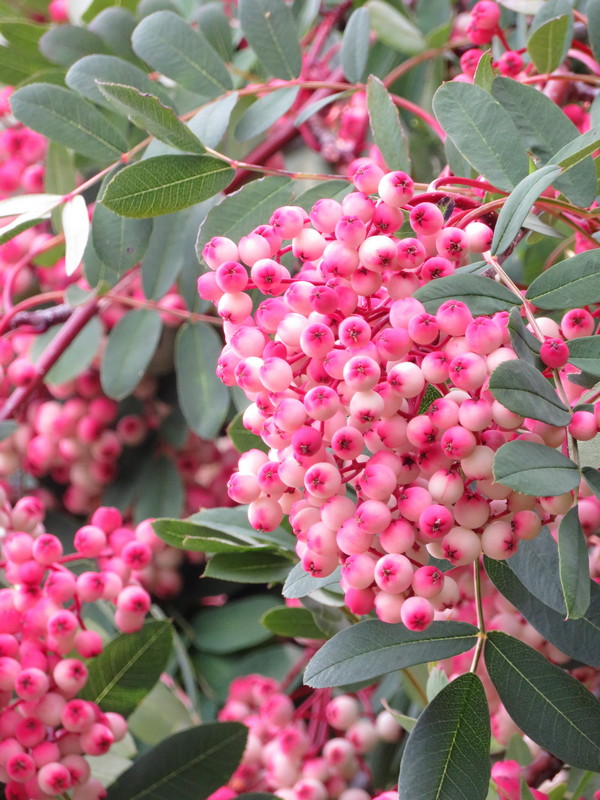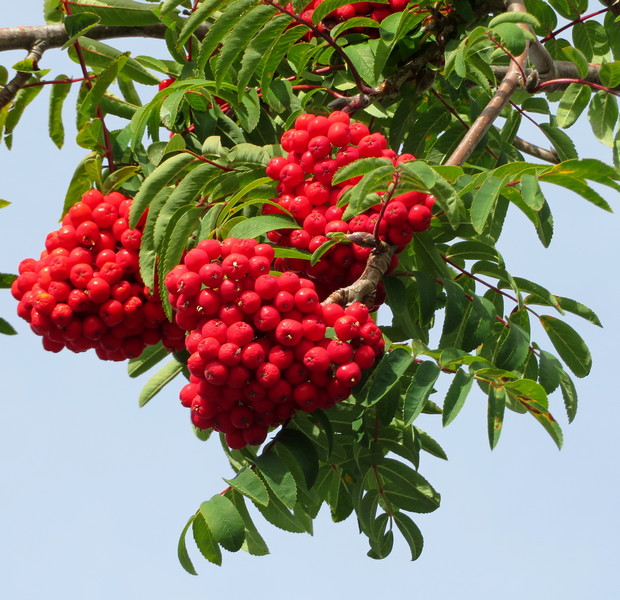Earlier in April I spent a week in the Southern Lakes area of the South Island and had my eye caught by the heavy crop of berries on ornamental trees in the area, particularly in and around Te Anau.
Sorbus hupehensis, or Chinese rowan, has deciduous foliage which darkens from pink to red in autumn, but first come the clusters of white-pink berries, lasting well into winter after the leaves have gone. The fluffy white spring flowers are attractive to bees and the pinnate foliage produces dappled shade. The tree can apparently tolerate almost any conditions, which would explain its popularity in this snowfall, sometimes wind-blasted area which, nevertheless, has hot summers.
This tree is native to Hubei (Hupeh) province in Western China, and was introduced to Britain by the renowned plant collector E.H. Wilson in 1910.
Vying for attention with Sorbus hupehensis were the Sorbus aucuparia trees, also known as rowan or mountain ash (though they’re not related to the ash family). The tree has a wide native range in the northern hemisphere – from Madeira (off the west coast of Africa) to Iceland and through Britain and Russia to China.
Rowan was once widely planted by houses as a protection against witches, perhaps because the colour red was considered to be the best colour for fighting evil. In Wales rowan trees were planted in churchyards and in Scotland cutting down a rowan was considered taboo.
The wood was used for stirring milk to prevent the milk curdling, and as a pocket charm against rheumatism. It was also used to make divining rods. Rowan berries are edible and can be used to make a tart jam, rich in Vitamin C. Find a recipe for rowan jelly here.
The second part of its Latin name, aucuparia comes from ‘aucupor’ which means to go bird-catching, a reference to the fruit being used by fowlers (bird catchers) to make birdlime, an adhesive substance spread on a branch or twig, upon which a bird may land and be caught.
Sorbus aucuparia also have fiery autumn foliage and pretty clusters of spring flowers.



Pingback: Pink Sorbus Berries – Exploring Colour
Just found Sorbus huphensis and reading your tree of the moment, sounds beautiful and looking forward to seeing it grow. Have S. aucuparia in my small woodland on edges and very excited to compare them as they flower and grow. Maybe they will divert the attention of my wood pigeons from strippng my fruit cherries! Love your photos and information Marianne
Hi Marianne, Thanks for taking the time to comment, it’s much appreciated. All the best, Sandra